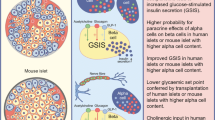Abstract.
The apical membrane of distal nephron epithelium (A6) has a Ca2+-dependent outwardly rectifying Cl− channel with single channel conductances of 3 pS for outward current and 1 pS for inward current under the basal condition. The single channel conductance for inward currents increased as cytosolic Ca2+ concentration ([Ca2+] c ) was elevated, while the single channel conductance for outward currents did not change at the range of [Ca2+] c from 10 nm to 1 mm. Insulin (100 nm) increased the single channel conductance for the inward current by increasing the sensitivity to cytosolic Ca2+ by 400-fold, but did not affect the single channel conductance for the outward current. Further, insulin increased the open probability of the channel. These effects of insulin were completely blocked by cyclosporin-A, an inhibitor of protein phosphatase type 2B (PP2B) which dephosphorylates phospho-tyrosine in addition to phospho-serine/threonine, but not by okadaic acid, an inhibitor of protein phosphatase type 1 and 2A. Further, these effects of insulin were also completely blocked by W7, an antagonist of calmodulin which is required for activation of PP2B. Lavendustin A, an inhibitor of protein tyrosine kinase (PTK), mimicked these effects of insulin; this action of lavendustin A required 1 hr after its application, while within 30 min after its application lavendustin A had no significant effects on the single channel conductance. On the other hand, lavendustin A blocked the insulin action for a relatively short time period (i.e., within 30 min after their application). However, H89 (an inhibitor of protein kinase A) or H7 (an inhibitor of protein kinases A, C and G) did not mimic the insulin action. Application of PP2B or protein tyrosine phosphatase to the cytosolic surface of the inside-out patch membrane increased the single channel conductance and the open probability as did insulin in cell-attached patches. The insulin-induced increases in single channel conductance and open probability were reversibly decreased by application of PTK catalytic subunit in the presence of ATP through a decrease in the sensitivity to cytosolic Ca2+, but not by protein kinase A. These observations suggest that as intracellular signalling of insulin action, PP2B-mediated dephosphorylation of phospho-tyrosine of the channel protein (or channel-associated protein) is a novel mechanism for regulation of single channel conductance, and that at least two different types of PTKs regulate the channel characteristics.
Similar content being viewed by others
Author information
Authors and Affiliations
Additional information
Received: 7 May 1997/Revised: 17 October 1997
Rights and permissions
About this article
Cite this article
Marunaka, Y., Niisato, N. & Shintani, Y. Protein Phosphatase 2B-dependent Pathway of Insulin Action on Single Cl− Channel Conductance in Renal Epithelium. J. Membrane Biol. 161, 235–245 (1998). https://doi.org/10.1007/s002329900330
Issue Date:
DOI: https://doi.org/10.1007/s002329900330




